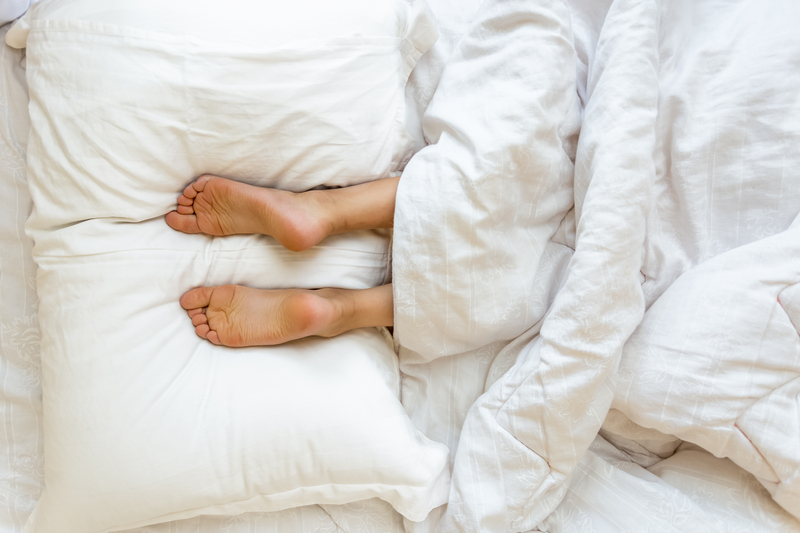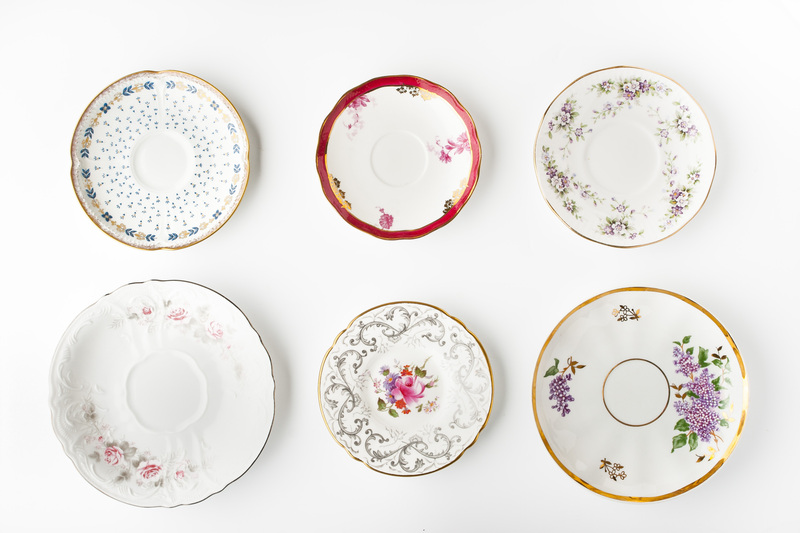Elevate Your Home Environment through Structured Clutter and Hoarder Cleanup
Do you find yourself overwhelmed by clutter, or are you struggling with hoarding tendencies that make your home feel less inviting? Understanding and implementing a structured approach to clutter and hoarder cleanup can dramatically elevate your living environment, boost your mental wellbeing, and increase the functionality and value of your space. In this in-depth article, we'll explore actionable strategies for addressing clutter, overcoming hoarding behaviors, and transforming your home into a serene sanctuary--all in a way that's sustainable and effective.
Understanding the Impact of Clutter and Hoarding on Your Home
Before taking the first step towards structured clutter and hoarder cleanup, it's crucial to recognize the profound effects that excess possessions and disorganization can have on your life. Clutter doesn't just impact the appearance of your home; it can also affect your mental and physical health, your relationships, and your day-to-day functionality.
- Physical Safety Risks: Cluttered spaces increase the risk of trips, falls, and fire hazards.
- Mental Health Effects: Persistent mess can cause stress, anxiety, and even depression.
- Financial Costs: Hoarding often leads to buying duplicates of misplaced items and can result in costly home repairs.
- Reduced Home Value: A cluttered environment can lower property value and deter potential buyers.
By addressing both the visible and hidden consequences of clutter, you're already on the path toward improvement.

Structured Clutter Cleanup: A Step-by-Step Blueprint
Adopting a structured clutter cleanup strategy is essential for sustainable results. Whether you're tackling a messy garage or a house overwhelmed by hoarding, breaking down the process into manageable steps makes the challenge less daunting and more achievable.
1. Assess and Set Realistic Goals
Start by assessing the scope of clutter or hoarding in your home. Walk through each room and take note of problem areas. Define clear, achievable goals--such as reclaiming your dining area for family meals or making your bedroom a restful retreat. Goal-setting helps track progress and keeps motivation high throughout the journey.
2. Prioritize Areas to Clean
If your entire home feels chaotic, it can be overwhelming to decide where to start. Prioritize based on function and necessity:
- Begin with essential living spaces (kitchen, bathroom, bedroom).
- Focus on areas that affect safety and daily functioning.
- Work from most to least cluttered to see quick wins early on.
3. Sort and Categorize Items
A crucial aspect of structured clutter cleanup is sorting your belongings into easy-to-manage categories. The most common are:
- Keep: Items you use regularly or that hold significant value.
- Donate: Gently used items someone else could benefit from.
- Recycle: Paper, plastics, and electronics that should be disposed of responsibly.
- Trash: Broken, expired, or useless items with no recycling option.
Establish dedicated bins or bags for each category to streamline the sorting process.
4. Remove and Dispose Responsibly
Once you've sorted everything, promptly remove items destined for donation, recycling, or disposal. Delaying this step can lead to second-guessing decisions and reverting back to old habits. Schedule donation pickups, drop off recyclables, and utilize junk removal services if necessary.
5. Create Organized Storage Solutions
With surplus items gone, it's time to organize what remains. Invest in shelves, bins, baskets, or closet systems as needed.
- Label storage containers for easy accessibility.
- Keep frequently used items within reach.
- Implement routines to restore items to their designated places daily.
Structured organization is not just about tidiness--it makes your home more functional and enjoyable to live in.
6. Maintain Your Clutter-Free Home
The key to long-term success is developing habits that prevent clutter from building up again. To elevate your home environment sustainably:
- Set a weekly schedule for decluttering hot spots.
- Adopt the "one in, one out" rule for new purchases.
- Revisit your organization solutions seasonally for updates.
The Unique Challenges of Hoarding Cleanup
Unlike typical mess, hoarding disorder involves a compulsive need to save items and difficulty parting with them, regardless of value. This goes beyond clutter, requiring a compassionate, structured cleanup method.
Recognizing Hoarder Behavior
- Accumulation of possessions impeding movement through the home
- Extreme distress or anxiety when discarding items
- Living areas rendered unusable for their intended purpose
Addressing such challenges calls for sensitivity, support, and often professional guidance.
How Structured Cleanup Transformations Helps Hoarders
If you or a loved one grapple with hoarding tendencies, consider these steps for structured, supportive cleanup:
- Engage Mental Health Professionals: Working with counselors or therapists who specialize in hoarding disorder can address underlying emotional issues.
- Build a Trust-Based Cleanup Team: Choose helpers who are patient, compassionate, and nonjudgmental.
- Set Incremental, Attainable Goals: Accept small victories, such as clearing a single surface or pathway.
- Develop Coping Strategies for Letting Go: Techniques may include mindfulness, journaling, or enlisting emotional support from friends and family.
A structured, stepwise cleanup plan ensures progress at a comfortable pace for everyone involved.
Benefits of Elevating Your Home through Structured Clutter & Hoarder Cleanup
Choosing to address clutter and hoarding through a structured cleanup process offers immediate and far-reaching rewards:
- Enhanced Safety: Clear, unobstructed walkways lower accident risks.
- Boosted Productivity: A tidy space supports focus and creativity, whether you're working remotely or enjoying hobbies at home.
- Peace of Mind: Organized environments reduce stress and support mental clarity.
- Improved Social Connections: You'll feel more comfortable inviting guests over, strengthening relationships.
- Increased Home Value: Well-maintained, clutter-free homes show better and attract higher offers on the market.
Structured cleanup is truly a transformative process, infusing your life with new energy and purpose.
Practical Tips to Sustain an Organized and Clutter-Free Home
Transformation doesn't stop once the clutter is gone. Long-term success depends on consistent habits and tailored routines. Here are practical tips for keeping your home at its best:
Daily Habits
- Do a quick tidy-up at the end of each day.
- Return items to their proper places after use.
- Sort mail and paperwork immediately to avoid pileups.
Weekly and Monthly Check-ins
- Designate a weekly decluttering day for high-traffic areas.
- Review wardrobes and storage spaces monthly to remove unnecessary items.
- Involve the entire household--kids can help sort toys and adults can tackle common living areas.
Seasonal Overhauls
- Deep clean rooms at the change of each season.
- Donate, sell, or recycle items not used in the past six months.
- Assess whether storage solutions are still meeting your needs.
Where to Start: Room-by-Room Cleanup Approach
Every room collects clutter differently. Here are room-specific strategies to start your structured cleanup today:
- Kitchen: Discard expired foods, clear countertops, organize pantry items by category.
- Living Room: Remove items that don't belong, donate unused electronics, streamline entertainment centers.
- Bedroom: Purge clothing you no longer wear, use under-bed storage, create a calming bedside area.
- Bathroom: Toss expired toiletries and cleaners, use baskets for daily essentials, install shelves for extra storage.
- Garage/Basement: Segment into zones for tools, seasonal gear, and donations; hang items for floor space; dispose of broken or obsolete equipment.
Tackling one zone at a time prevents overwhelm and builds momentum for continued progress.

When to Call in Professional Clutter and Hoarder Cleanup Services
If the scope of hoarding or clutter is beyond a DIY fix--or if emotional attachment makes progress difficult--professional cleanup teams provide invaluable expertise, discretion, and efficiency. Their services often include:
- Comprehensive assessment and planning
- Physical removal and responsible disposal of items
- Deep cleaning and sanitization
- Customized organization solutions
- Collaboration with mental health professionals (for severe hoarding cases)
Professional services are especially important when safety hazards are present, such as mold, pest infestations, or structural issues. Don't hesitate to seek support--your home and mental health are worth it.
Conclusion: Unlock Your Best Life with a Structured Approach to Cleanup
Elevating your home environment through structured clutter and hoarder cleanup isn't simply about aesthetics--it's about reclaiming your space, your confidence, and your peace of mind. By embracing a proven step-by-step method, setting realistic goals, and nurturing sustainable habits, you'll enjoy a rejuvenated home that supports every aspect of your life. Whether you're tackling minor disorganization or major hoarding issues, remember that transformation is possible--with compassion, persistence, and the right plan. Make today the day you start your journey to a clutter-free, elevated home environment.
Ready to begin your structured clutter and hoarder cleanup? Take the first step today--and unlock the life-changing benefits of a truly elevated home.